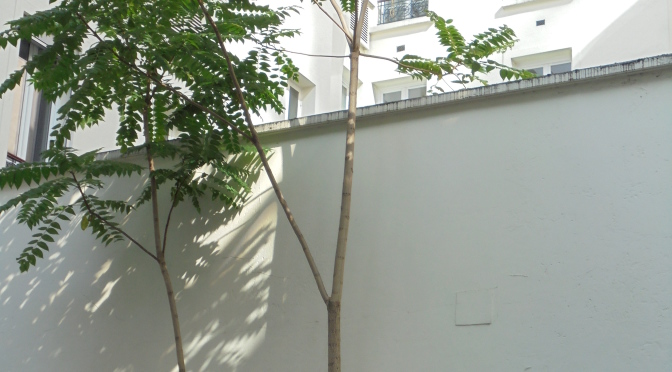Last summer I visited the UNESCO archives in Paris. Located at the far end of the Champ de Mars, right after the Eifel Tower and the École Militaire, the organization’s headquarter is a well-known and impressive building. Place de Fontenoy, however, is a place for diplomats and government-representatives. Historians interested in the past activities of UNESCO are directed to another location in the 15th arrondissement. The documents of the Division of Ecological Sciences, the stuff I am professionally interested in, are housed in the basement of a temporary building on UNESCO’s grounds at Rue Miollis. Although the place misses the grandeur of the headquarters, the labyrinth-structure of Miollis and the dusty basement packed with unsorted files, definitely adds to the supreme experience we all love so much: immersing ourselves into bygone times by reading obscure books in obscure places.
Sitting in a tiny and improvised reading room waiting for my sources, I could see a ray of sunlight drop through a small window that overlooked a courtyard surrounded by mucky concrete walls. At closer inspection, and to my great surprise, I saw a tree growing from the wall at the other side of the courtyard. It was a sprig of the tree of heaven (ailanthus altissima), and this tree, it turned out, told a greater story about the relation between science and society than all the textual documents that surrounded me could ever do.
Chinoiserie
The tree of heaven is an exotic species. You will not find it during a forest hike between Europe’s native oaks and beeches. In fact, the tree of heaven only appears in our city parks and other urban spaces because colonial missionary-botanists discovered it by accident in China during their travels in the eighteenth-century. They sent seeds back to botanical gardens in France and England for the purpose of scientific curiosity only. However, the seeds arrived during an outbreak of chinoiserie and were quickly transported from the academic herbarium to country houses around Europe. Chinoiserie started as an iconographic theme in decorative arts when artists combined rococo with oriental elements. Many aristocrats, however, in a continuous struggle to distinct themselves from their peers, went one step further: they started to build pagodas and teahouses in their gardens and fiercely desired oriental trees to imitate a Chinese landscape.
Landscape architects soon discovered that the tree of heaven possessed qualities that made it ideal for urban environments too: it shot up very rapidly and seemed immune to industrial pollution. In the nineteenth-century, therefore, the species was planted en masse along the boulevards of Paris, London and Boston.
City dwellers greatly admired the tree of heaven for aesthetical reasons. Its smooth trunk resembled a Corinthian column as it reached towards the clouds bolt upright. The majestic crown with even-pinnately compound angel shaped leaves and the subtle yellow flowers all added to the tree’s blissful appearance. However, the European aristocrats, architects and townsfolk did not yet know that in China ailanthus altissima was known by another name: the foul smelling tree (chòuchūn). They found out that it had other nasty habits too. Every individual tree produced around 300.000 wind-dispersed seeds a year. So while the tree that stank like a polecat started to colonize America and Europe’s urban space and countryside, the apparition for everything oriental quickly waned.
Ghetto Palm
In the United States the tree of heaven now functions as a barometer to measure the rate of decay of a certain area. If you see a lot of “ghetto palms” growing from cracks and holes you know you have come to the wrong neighborhood. It really is a viscous weed. When I traveled by train to Portugal last year I literally saw a hedge of ailanthus altissima sprouts next to the track all the way from Antwerp to Lisbon. Recently, therefore, botanists in the UK took charge of the situation again. Two centuries after they had planted seeds in their botanical gardens with great enthusiasm, they started a lobby to add the “tree of hell” to the Government’s official list of banned, invasive alien species, because it was destroying indigenous plants.
In spite of its current status as ghetto palm and invasive species, the tree of heaven still attracts admirers. The province of Maastricht, for example, recently planted a quadruple row of ailanthus altissima at the Avenue Céramique, the boulevard leading to the new provincial government building. I already spotted the first sprout on the roof of my office building two kilometer away. For the past decades, both UNESCO and Dutch universities have endured structural budget cuts. Are the ghetto palms growing from the roofs and walls of their premises signs of institutions in decay?


